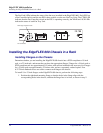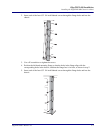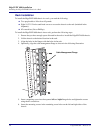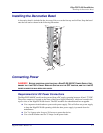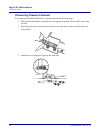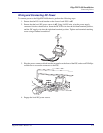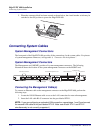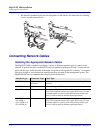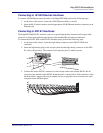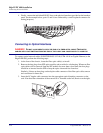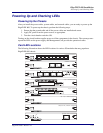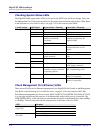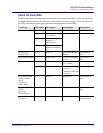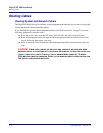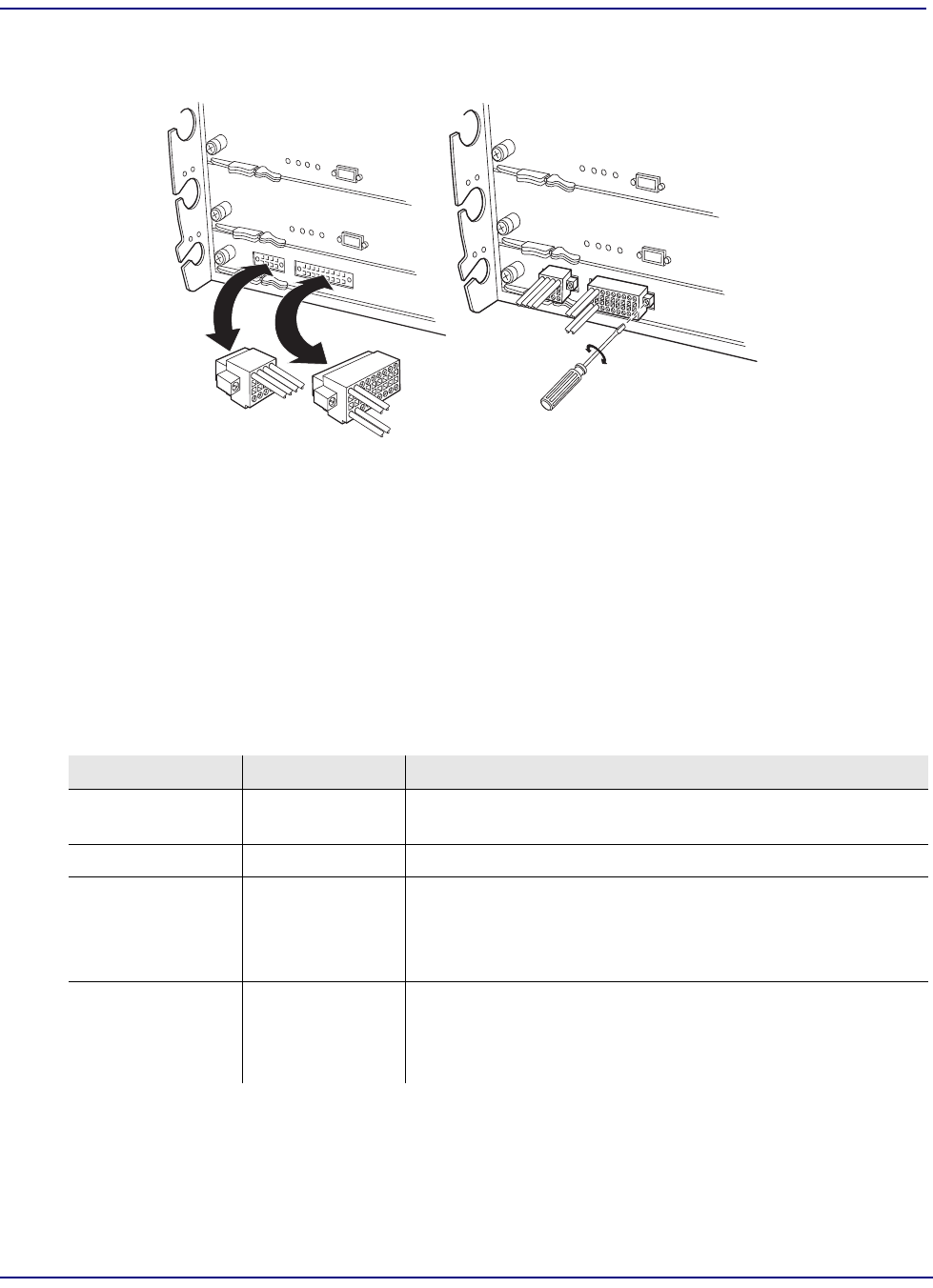
2-12 EdgeFLEX 600 - Release 2.0
EdgeFLEX 600 Installation
Connecting Network Cables
3. Re-insert the terminal blocks into the receptacles on the chassis, and fasten the two retaining
screws on each terminal block.
Connecting Network Cables
Selecting the Appropriate Network Cables
The EdgeFLEX 600 is capable of providing a variety of different interface types to connect to the
network. In general, the ports on the SCPX cards are regarded as high-speed “trunk” or network-side
ports, and the ports on the linecards in the upper slot positions are regarded as “tributary” or customer-
side ports, though no such distinctions between interfaces are made in the management system. The
EdgeFLEX 600 can accommodate the following network interfaces:
Interface Type Connector Type Cable Type
DS1/E1 High-density
connector
Carrier Access custom cable to breakout panel providing RJ-48
interfaces
10/100 Ethernet RJ-45 100-ohm Category 5 UTP
Gigabit Ethernet LC duplex Multi-mode 62.5/125 micron fiber optic.
Note: ETSI compliant cabinets may require BTW-style (31.5mm
maximum depth) low-profile strain relief housing on fiber optic
cables, in order to meet the 300mm depth requirements.
SONET/SDH
OC-3/STM-1,
OC-12/STM-4, or
OC-48/STM-16
LC duplex Single-mode 9/125 micron fiber optic, nondispersion shifted.
Note: ETSI compliant cabinets may require BTW-style (31.5mm
maximum depth) low-profile strain relief housing on fiber optic
cables, in order to meet the 300mm depth requirements.



